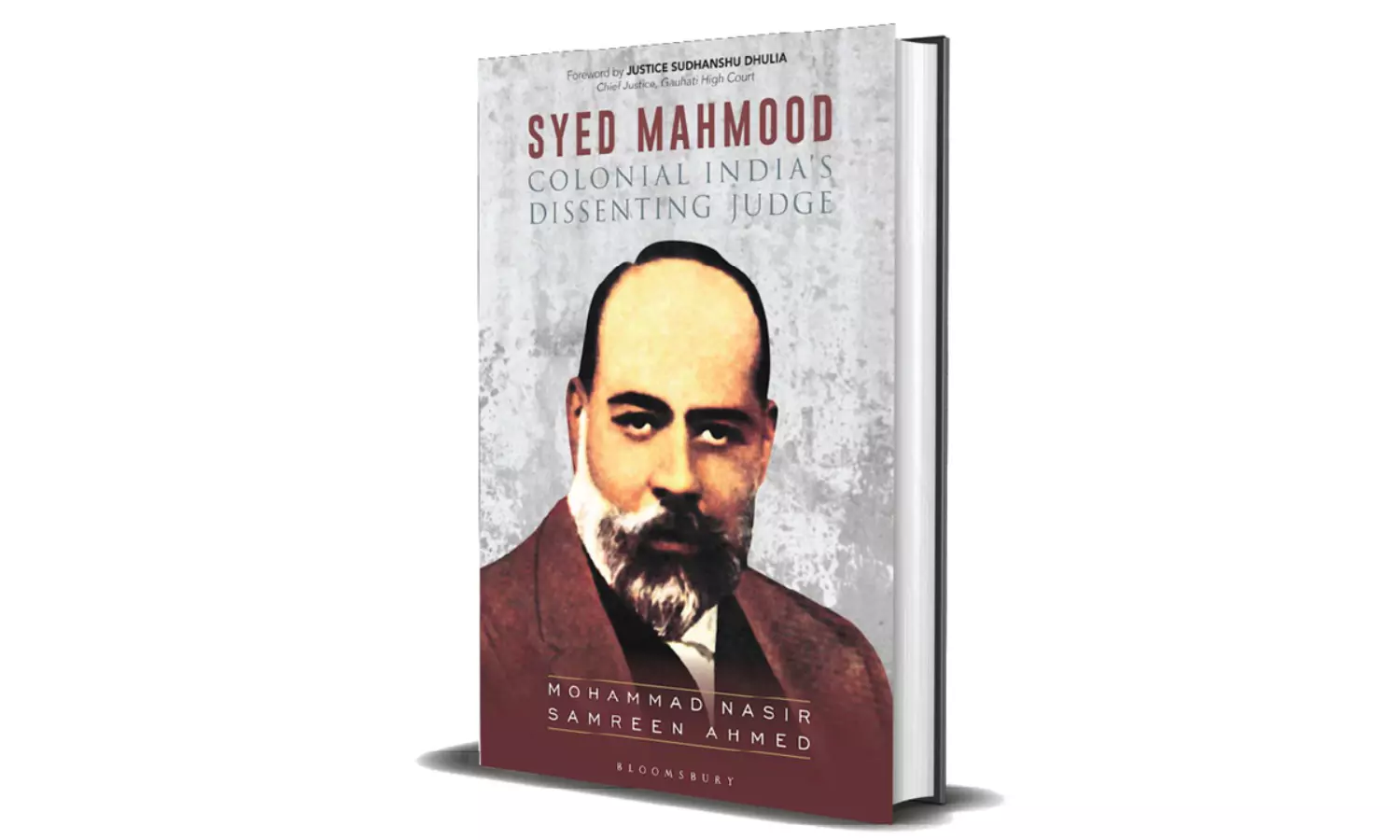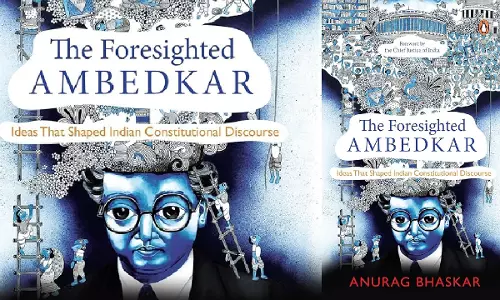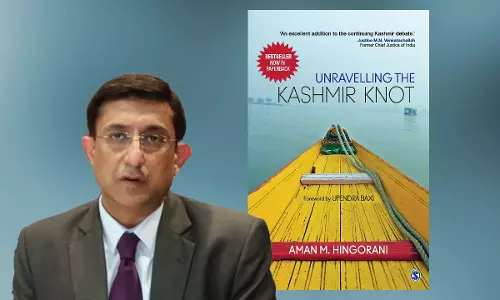A Man Of Many Parts: Book Review Of Syed Mahmood: Colonial India's Dissenting Judge

In the late 19th-century Colonial India, a district judge, in Raebareli, ordinarily delivered a judgment in the case of Deputy Commissioner Rae Bareli v. Rampal (1884). The judgment involved the interpretation of an issue relating to the law of Mortgages. The judgment was brimming with erudition and was so reasonably constructed that the members of the Judicial Committee of the Privy...
In the late 19th-century Colonial India, a district judge, in Raebareli, ordinarily delivered a judgment in the case of Deputy Commissioner Rae Bareli v. Rampal (1884). The judgment involved the interpretation of an issue relating to the law of Mortgages. The judgment was brimming with erudition and was so reasonably constructed that the members of the Judicial Committee of the Privy Council tellingly remarked, ''so talented a person should not be wasted in the subordinate judiciary.'' Consequently, the judgment served as a launching pad for the judge and ultimately propelled him to the High Court Judgeship. The judge – in question – was none other than the remarkable Justice Syed Mahmood.
In 1887, Syed Mahmood, the younger son of the eminent Indian social reformer, thinker and educationist Sir Syed Ahmad Khan, became the first Muslim and North-Indian to officiate as a permanent judge of a High Court (Allahabad High Court) in British India. In fact, his elevation made him the youngest Indian to don the robes of a High Court Judge – an accomplishment that remains unsurpassed, to this day.
Syed Mahmood was not only a legal luminary – a perspicacious judge or a jurist, but was also, an intellectual par excellence, an academician of admirable fineness, a generous philanthropist, and a literary aficionado. He was an accomplished polyglot and polymath in the truest sense of the terms. Although, his invaluable contribution to diverse fields of Indian legal jurisprudence, marked with judicial integrity, unfaltering valour and altruistic approach, has been the hallmark of his legacy.
Surprisingly, despite him leaving behind a monumental track record, not enough amount of ink was spilt on his life and work hitherto, save a handful of works, among which Alan M. Guenther's PhD thesis titled ''Syed Mahmood and Transformation of Muslim Law in British India'', submitted to the Islamic Studies of McGill University in Canada in 2004, continues to hold the field.
Syed Mahmood: Colonial India's Dissenting Judge
Mohammad Nasir and Samreen Ahmed's debut book titled 'SYED MAHMOOD: COLONIAL INDIA'S DISSENTING JUDGE', published in 2022, by Bloomsbury India, is a compelling attempt in this regard, to chronicle the life and work of Justice Syed Mahmood. The book, bordering on the genre of biography, draws upon the primary and secondary sources to lay bare the colossal legacy of Justice Syed Mahmood, which so far had remained cloaked in the mists of time and had only seen scattered documentation. The book offers a holistic view of Syed Mahmood's life, coalescing his professional and personal fields of action. The authors' caveat in the Introduction of the book that ''the biography is neither a hagiography nor an apologia” rings true all over the book. As one courses through the pages, it becomes vividly clear that the authors neither try to exaggerate nor intend to tone down the events that marked Syed Mahmood's life, but rather go on to spotlight these events with acuity and meticulous gaze, riding on a comprehensive body of research work and analytical rigour.
The book begins with the foreword by the distinguished judge of the Supreme Court of India, Justice Sudhanshu Dhulia, whose judicial philosophy is well-known to the legal fraternity, and was recently on display for everyone to see – when he, through his judgment, set aside the Karnataka Government's hijab ban order. Justice Dhulia, in his forward, among other things, outlines various reasons that in his view make Justice Syed Mahmood a remarkable judge, including his scintillating judgments, his resounding dissents, and inter alia, his litigant-friendly approach within a specific social and political milieu.
However, one might still pause, and ask – but what makes Justice Syed Mahmood, as a judge, so special to deserve a biography after so many years have passed? Or, were there not many judges in the past demonstrating similar characteristics as his; what exactly makes him stand out? Or, what distinction he holds, to rivet our attention and occupy a space in the annals of Indian legal history? Well, the answer to all these questions is spelled out in the book, and to a large extent, is mirrored by the title of the book itself – ''Colonial India's Dissenting Judge.'' This signals that Justice Mahmood had to serve and function as a judge during the colonial era, that is, within a limited legal framework and sans a 'democratic constitution'. Those were the times when the judiciary was considered the weakest branch of the state as it ''possessed neither the power of the purse nor the power of the sword.'' Despite such systematic and structural fetters, Justice Syed Mahmood showed exemplary courage and conviction. He never shied away from handing down impartial, and bold judicial pronouncements. He never flinched from ''resisting colonial power by espousing the cause of judicial independence.'' To paraphrase another legal doyen, Hon'ble Justice Hidayatullah – Justice Mahmood treated the law '“with the hand and mind of an artist.”
Interestingly, it is, indeed, his dissent that is believed to have sowed the seeds of Judicial Activism in India – which only later saw its culmination in the late 20th Century in independent India, and continues to inform the authority of the Constitutional Courts in India today.
During his tenure as a judge, Justice Mahmood has rendered around 3,000 judgments, out of which, as a High Court judge, his 383 Judgments are reported in the Indian Law Reports. The authors have, understandably, analysed only selected judgments in the book, which they categorize as 'landmark' judgments', due to ''their impact on society, jurisprudential scholarship, protecting civil liberties, advancement of justice, precedential value, and contemporary relevance,'' among other things.
For instance, the authors elucidate how, back then, in the famous case of Queen Empress v. Pophi (1891), Justice Mahmood in his dissenting opinion read the concept of 'fair trial' being integral to the 'Criminal Justice System' and how he infused the 'principles of natural justice' in the word 'hearing' occurring in Section 423 of the Code of Criminal Procedure, 1882. In contemporary times, these principles, in a constitutional democracy like India, are considered to be the warp and woof of the Criminal Justice System.
Another notable case mentioned by the authors, namely Queen Empress v. Babulal (1884), illustrates how Justice Mahmood in his dissenting opinion advocated to ''put a stop on torture of prisoners for extraction of confessions under the Indian Evidence Act, 1872.''
Similarly, in the case of Gobind Dayal v. Inayatullah (1885), Justice Mahmood speaking for the court, expounded the concept of law of pre-emption under the Muslim Law. As the authors point out in the book, the Hon'ble Supreme Court of India has recently in 2020, in the case of Raghunath(D) v. Radha Mohan(D) and Others, affirmed the same decision of Justice Syed Mahmood.
These instances speak volumes about the judicial acumen and progressive vision that Justice Mahmood exhibited, and brought to fruition in the bleakest of times, back in the day.
Also, as a student of law, who would not be familiar with, or at least have come across the landmark case of Abdul Kadir v. Salima (1886), in which Justice Mahmood, addressing the question of the nature of Muslim marriage, prophetically held that 'Muslim marriage is not a sacrament but a contract'; and also explicated the question of dower in marriage under the Muslim Law, among other issues. The case also finds a due reference in the book.
Apart from this, Justice Mahmood's judgments in the realm of Hindu Law, are of no less importance. The book covers a couple of such judgments, including Janki v. Nand Ram (1889), the case that was instrumental in providing maintenance to a Hindu widow on innovative grounds, and also his view in the case of Binda v. Kaunsilia and another (1891), that, as the authors have underscored, has played an indispensable role in charting out the legislative framework of the Hindu Marriage Act, 1955.
The authors have also discussed dozens of other significant rulings of Justice Syed Mahmood, touching upon the various aspects of Substantive and Procedural laws. Two separate chapters have been dedicated to discussing the legal career and the landmark judgments of Justice Mahmood in the book – a real treasure trove of literature for the students of law.
Furthermore, the authors have also mentioned in detail, the historic controversy between Justice Syed Mahmood and the then Chief Justice of Allahabad High Court, Sir John Edge, that ultimately led to the resignation of Justice Syed Mahmood from the High Court Judgeship, in the year 1893. It is noteworthy that while addressing and analysing the controversy, the authors do not jump the gun or strike a sentimental note, and simultaneously brush aside the historical facts in favour of Justice Mahmood, but rather with a dispassionate lens juxtapose, weigh, and scrutinize the averments marshalled from both sides, and accordingly arrive at a concrete conclusion. That, in essence, signifies that Justice Syed Mahmood could not bear his Judgeship being dependent on the ''frowns and smiles'' of the Chief Justice who possibly wanted him – the native puisne judge – to toe the line.
The book also goes on to capture in depth the role of Justice Syed Mahmood as an Educationist and his enormous contribution to the making of the Muhammadan Anglo-Oriental College or MAO College (now Aligarh Muslim University). This part of Justice Mahmood's life has largely remained out of view from the public eye, conceivably due to his father's gigantic legacy that eclipsed it, and also due to the dearth of scholarship in this regard. The book painstakingly fills this gap and sheds light on Justice Syed Mahmood's outstanding role which ranges from preparing a blueprint for the University to development of legal education at the University and serving as a Law teacher at the University, and so on. Also, in the post-resignation period, Justice Mahmood's engagement in the academic and administrative affairs of Muhammadan Anglo-Oriental College, his lectures at the Educational Conference, his book(s) on English Education, on Muslim Law, and the Indian Evidence Act have all been given adequate space and consideration in the book. For this reason, also, the book, in my view comes across as a successful attempt by the authors in ''de-hyphenating the role of Syed Mahmood from that of his father.''
Nevertheless, Justice Syed Mahmood like all humans had his share of foibles too, that, however, intensified gradually, and punctuated his life at various stages, and eventually strained his professional and personal relations to the point of no return. This side of Justice Mahmood's personality was certainly his Achilles heel. The authors, in alignment with their scholarly commitment, have adroitly delved into these grey areas of his personality, and done the job quite objectively.
It is to be remembered that the life of Justice Syed Mahmood may have been a mixed bag of feats and a few failures, especially the later part of his life. However, it is essentially his life's heyday that is of utmost relevance to us today. At present, when judicial dissent has become a rare sight, an endangered enterprise, or a hazardous undertaking, Justice Mahmood may be looked up to as the north-star, a compass, that can guide and help steer the boat of the judiciary. Today, his example may act as a necessary impetus for the courts, to stand up, when called upon, to protect the independence of the judiciary, and the civil liberties of citizens; and guard against every chicanery, and overt act that seeks to dilute and delegitimize the hallowed principles enshrined in the Constitution.
Overall, the book, Syed Mahmood: Colonial India's Dissenting Judge, by Mohammad Nasir and Samreen Ahmed, is a first-rate invitation into the life of Justice Syed Mahmood. Replete with quality narration, wrapped in gripping language and style, and stemming from a substantial body of research work – it makes for an inspiring and insightful read.
(Amjed Ashraf Malla is an LL.M student at Aligarh Muslim University)
Reference;
Mohammad Nasir, Samreen Ahmed. Syed Mahmood: Colonial India's Dissenting Judge. (Bloomsbury Publishing, India, Ist edn., 2022).




